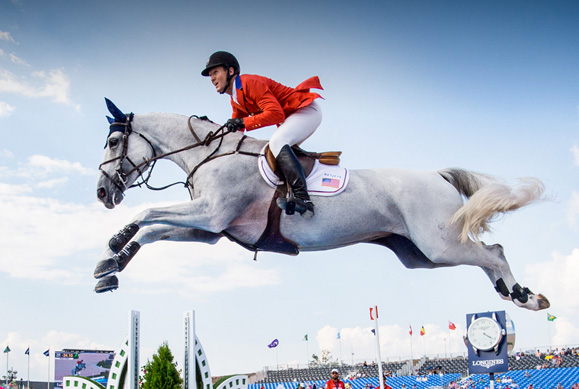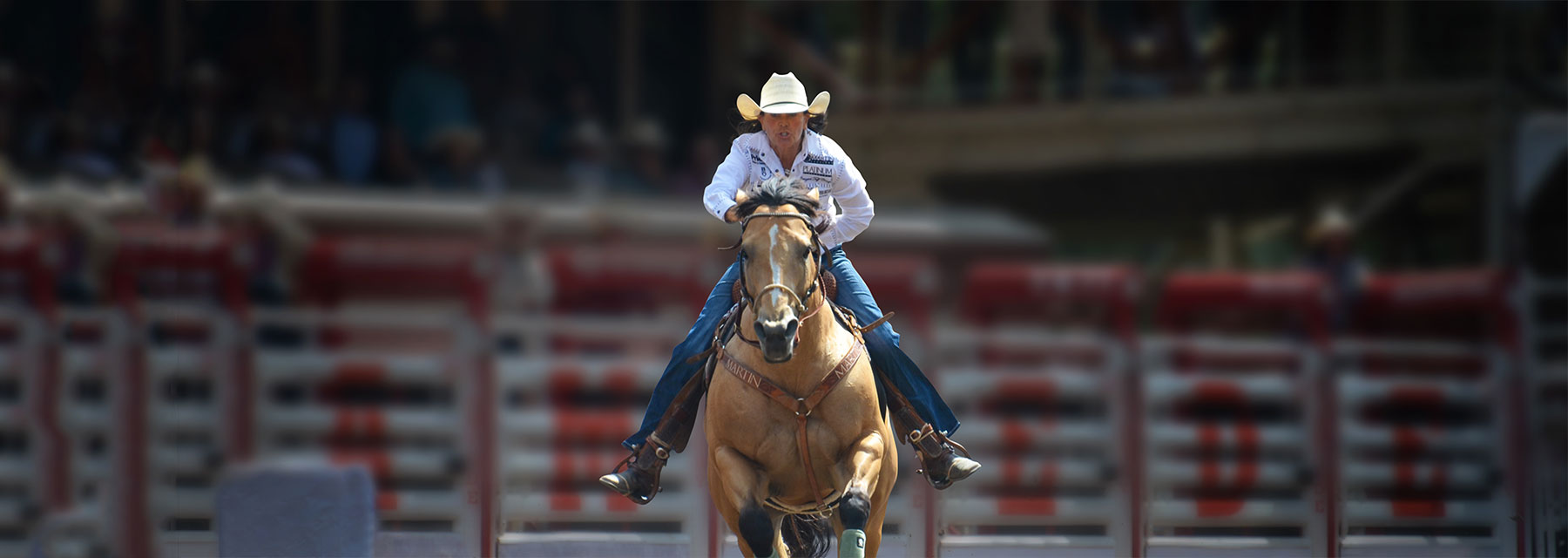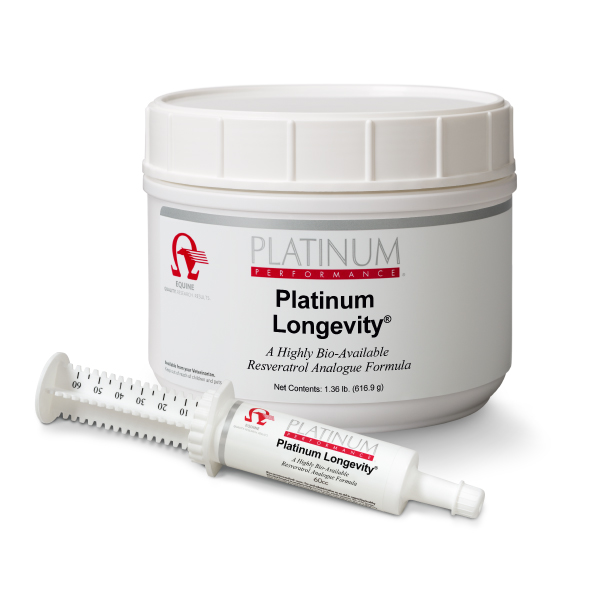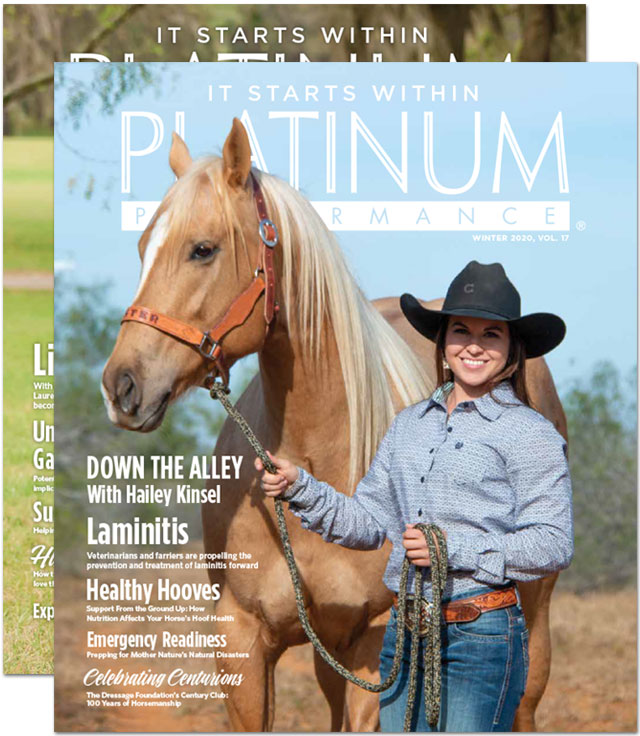Protecting a Horse’s Health with a Resveratrol Analogue, Antioxidants and Curcumin
Many disorders in both humans and animals have been directly linked to inflammation and oxidative stress. Indeed, it is impossible to separate the two due to their intricately linked reactions. Certain events that initiate inflammatory and oxidative stress responses can be avoided; however, for most of us, and particularly for the horse, there is the certainty that one will always be confronted with these stressors to some degree. Due to the ubiquitous nature of inflammatory and oxidative stressors, it is imperative to help the body maintain normal responses to these stressors, as they can affect performance and overall health. Various dietary strategies have been designed to do just this. For example, diets relatively high in omega-3 fatty acids and low in omega-6 fatty acids are often advocated for healthy living. However, other nutrients can play a significant role in supporting the body's response to inflammation and reducing oxidative stress.
Phytonutrition
Pterostilbene is a compound that is chemically very similar to resveratrol, a compound that has received much public and scientific attention in past years for its purported ability to increase lifespan as well as protect against various diseases and conditions.1 Unfortunately, resveratrol has limited potential due to its poor bioavailability and/or very quick degradation once it is absorbed. However, as a methylated analogue of resveratrol, pterostilbene is far more promising. For example, oral intake studies indicate that pterostilbene is 70 to 90 percent bioavailable whereas resveratrol has a 20 to 30 percent absorption rate.2,3 Furthermore, pterostilbene remains intact in the blood for up to 7 times longer than resveratrol.4 Biological activities attributed to pterostilbene range from antioxidant benefits to vascular health support.3,5-9 The mechanisms of action attributed to pterostilbene include both modulation of gene expression and enzymatic activity.10
Antioxidants
Superoxide Dismutase (SOD) is a metalloenzyme that is present in nearly all cells where it catalyzes the dismutation of superoxide to oxygen and hydrogen peroxide. Although the importance of SOD in modulating oxidative stress has been well understood for years, few trials have reported on the benefits of oral supplementation with this enzyme until relatively recently. In research studies, SOD has been shown to provide support for the onset of fatigue, increased activities of circulating antioxidant enzymes and promote red blood cell resistance to exercise-induced hemolysis in humans and animals. In the horse, oral supplementation for 60 days with a melon extract high in SOD during intense training was associated with maintenance of resting plasma levels of creatine kinase,14 an enzyme that is often increased after muscle damage associated with exercise. Furthermore, plasma resistance to exercise-induced hemolysis improved in the supplemented group and was significantly greater than that in the control group in the study.
Other antioxidants, such as vitamins E and C, have also been utilized to aid in the protection against oxidative stress. Vitamin E has been negatively correlated with levels of certain markers of lipid peroxidation in exercising horses,15 and vitamin C supplementation has been shown to reduce markers of lipid peroxidation and promote plasma antioxidant capacity in thoroughbred racehorses.16 The combination of vitamins E and C has been utilized to support horses with recurrent airway obstruction.17
Curcumin
The benefits of curcumin, which is the primary active ingredient of turmeric, have had a prominent role in Indian Ayurvedic medicine since 1900 BC.18 Curcumin purportedly has antioxidant properties19 and may provide support for inflammatory conditions21 as well as cognitive disorders.20 Curcumin’s biochemical benefits are due, in part, to regulation of transcription factors such as PPARgamma and NF-kappa beta.20,21 19 Franck et al.22 studied curcumin’s effect on oxidative stress in horses by stimulating equine neutrophils and measuring production of oxidative products. 23-25 In this study, the investigators reported a dose-dependent inhibition of curcumin on reactive oxygen species production and myeloperoxidase activity. Another in vitro study showed that curcumin protects equine cartilage explants against IL-1beta induced degradation.26
Pterostilbene vs. Resveratrol
- Pterostilbene is a methylated analogue of resveratrol so chemically very similar
- Pterostilbene is 3 times more bioavailable than resveratrol
- Pterostilbene remains intact in the blood 7 times longer than resveratrol
Platinum Longevity® Powder & Paste
A Highly Bioavailable Resveratrol Analogue Formula
This formula is chosen for high-performing equine athletes to help maintain normal levels of inflammation and support the horse’s response to oxidative stress and muscle breakdown. Available as a powder for daily support, as well as a paste for convenient pre-performance dosing.
Ingredients
Powder: Vitamin C (ascorbic acid), Turmeric (Curcuma longa) (root) Extract, Pterostilbene (resveratrol analogue), Superoxide dismutase (SOD) [Cucumis melo].
Paste: Vitamin C (ascorbic acid), Turmeric (Curcuma longa) (root) Extract, Pterostilbene (resveratrol analogue), Ascorbyl Palmitate (fat soluble vitamin C), Superoxide dismutase (SOD) [Cucumis melo].
Sizes Available:
.34 lb (30 Servings), .68 lb (61),
1.36 lbs (123), 60 cc (6), Case 12 (72)
| ACTIVE INGREDIENTS PER 1 SCOOP (5,000 MG) | |
| Vitamin C (as ascorbic acid) | 3,230 mg |
| Turmeric (Curcuma longa) (root) Extract | 990 mg |
| Pterostilbene (resveratrol analogue) | 500 mg |
| Superoxide dismutase (SOD) [Cucumis melo] (equivalent to 630 IU SOD) |
45 mg |
| ACTIVE INGREDIENTS PER 10 CC (11,000 MG) | |
| Vitamin C (as ascorbic acid) | 2,700 mg |
| Turmeric (Curcuma longa) (root) Extract | 990 mg |
| Pterostilbene (resveratrol analogue) | 500 mg |
| Ascorbyl Palmitate (fat soluble vitamin C) | 500 mg |
| Superoxide dismutase (SOD) [Cucumis melo] (equivalent to 630 IU SOD) |
45 mg |
Powder also available in Platinum PAKs®
Use syringes for pre-performance support!
“Longevity is my go-to support product for performance horses. Any time I can recommend natural support that is show safe for hard-working muscles and joints is a good thing where performance and recovery are concerned.”
— Caitlin W., Platinum Advisor Since 2013
Literature Cited
1. Frémont L. Biological effects of resveratrol. Life Sci 2000;66:663-673.
2. Kapetanovic I, Muzzio M, Huang Z, et al. Pharmacokinetics, oral bioavailability, and metabolic profile of resveratrol and its dimethylether analog, pterostilbene, in rats. Cancer Chemother Pharmacol 2011;68:593-601.
3. Estrela JM, Ortega A, Mena S, et al. Pterostilbene: Biomedical applications. Critical Reviews in Clinical Laboratory Sciences 2013;50:65-78.
4. Remsberg C, Yáñez J, Ohgami Y, et al. Pharmacometrics of pterostilbene: preclinical pharmacokinetics and metabolism, anticancer, antiinflammatory, antioxidant and analgesic activity. Phytother Res 2008;22:169-179.
5. Joseph J, Fisher D, Cheng V, et al. Cellular and behavioral effects of stilbene resveratrol analogues: implications for reducing the deleterious effects of aging. J Agric Food Chem 2008;56:10544-10551.
6. Chang J, Rimando A, Pallas M, et al. Low-dose pterostilbene, but not resveratrol, is a potent neuromodulator in aging and Alzheimer’s disease. Neurobiol Aging 2011;[Epub ahead od print].
7. McCormack D, Schneider J, McDonald D, et al. The antiproliferative effects of pterostilbene on breast cancer in vitro are via inhibition of constitutive and leptin- induced Janus kinase/signal transducer and activator of transcription activation. Am J Surg 2011;202:541-544.
8. Pari L, Satheesh M. Effect of pterostilbene on hepatic key enzymes of glucose metabolism in streptozotocin- and nicotinamide-induced diabetic rats. Life Sci 2006;79:641-645.
9. Rimando A, Nagmani R, Feller D, et al. Pterostilbene, a new agonist for the peroxisome proliferator-activated receptor alpha-isoform, lowers plasma lipoproteins and cholesterol in hypercholesterolemic
hamsters. J Agric Food Chem 2005;53:3403-3407.
10. Pterostilbene. Monograph. Altern Med Rev 2010;15:159-163.
11. Houghton C, Steels E, Fassett R, et al. Effects of a gliadin-combined plant superoxide dismutase extract on self-perceived fatigue in women aged 50-65 years. Phytomedicine 2011;18:521-526.
12. Vouldoukis I, Conti M, Krauss P, et al. Supplementation with gliadin-combined plant superoxide dismutase extract promotes antioxidant defences and protects against oxidative stress. Phytother Res 2004;18:957-962.
13. Lallès J, Lacan D, David J. A melon pulp concentrate rich in superoxide dismutase reduces stress proteins along the gastrointestinal tract of pigs. Nutrition 2011;27:358-363.
14. Notin C, Vallon L, Desbordes F, et al. Oral supplementation with superoxide dismutase in Standardbred trotters in training: a double-blind placebo-controlled study. Equine Vet J 2010:375-381.
15. McMeniman N, Hintz H. Effect of vitamin E status on lipid peroxidation in exercised horses. Equine Vet J 1992;24:482-484.
16. White A, Estrada M, Walker K, et al. Role of exercise and ascorbate on plasma antioxidant capacity in thoroughbred race horses. Comparative Biochemistry and Physiology - Part A: Molecular & Integrative Physiology 2001;128:99-104.
17. Deaton C, Marlin D, Smith N, et al. Antioxidant supplementation in horses affected by recurrent airway obstruction. J Nutr 2004;134:2065S-2067S.
18. [Noauthorslisted]. Curcumalonga(turmeric). Monograph. AlternMedRev 2001:S62-66.
19. Jurenka J. Anti-inflammatory properties of curcumin, a major constituent of Curcuma longa: a review of preclinical and clinical research. Altern Med Rev 2009;14:141-153.
20. WangH,ZhaoY,ZhangS,etal.PPARgammaagonistcurcuminreducesthe amyloid-beta-stimulated inflammatory responses in primary astrocytes. J Alzheimers Dis 2010;20:1189-1199.
21. ChunK,KeumY,HanS,etal. Curcumin inhibits phorbolester-induced expression of cyclooxygenase-2 in mouse skin through suppression of extracellular signal- regulated kinase activity and NF-kappaB activation. Carcinogenesis 2003;24:1515- 1524.
22. FranckT,KohnenS,GrulkeS,etal.Inhibitory effect of curcuminoids and tetrahydrocurcuminoids on equine activated neutrophils and myeloperoxidase activity. Physiol Res 2008;57:577-587.
23. Weiss D, EvansonO, McClenahanD,etal. Evaluation of platelet activation and platelet-neutrophil aggregates in ponies with alimentary laminitis. Am J Vet Res 1997;58:1376-1380.
24. Grulke S, Benbarek H, Caudron I, et al. Plasma myeloperoxidase level and polymorphonuclear leukocyte activation in horses suffering from large intestinal obstruction requiring surgery: preliminary results. Can J Vet Res 1999;63:142-147.
25. Riggs L, Franck T, Moore J, et al. Neutrophil myeloperoxidase measurements in plasma, laminar tissue, and skin of horses given black walnut extract. Am J Vet Res 2007;68:81-86.
26. Clutterbuck AL, Mobasheri A, Shakibaei M, et al. Interleukin-1β–Induced Extracellular Matrix Degradation and Glycosaminoglycan Release Is Inhibited by Curcumin in an Explant Model of Cartilage Inflammation. Annals of the New York Academy of Sciences 2009;1171:428-435.
You May Also Like

Managing Common Muscle Disorders in Horses
Management procedures and specific dietary interventions can help reduce the severity and the frequency of episodes.
Read More about Managing Common Muscle Disorders in Horses
The Science of Sport
The Evolution of How We Treat, Condition & Feed the Competitive Athlete.
Read More
Connectivity: Tendon & Ligament Injuries in the Horse
Leading veterinarians are advancing the science of maintaining and healing tendons and ligaments in the horse.
Read More

